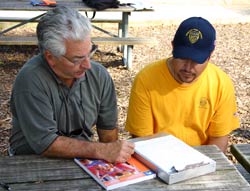 Inspections, Maintenance and Waivers Can Win the Ballgame Inspections, Maintenance and Waivers Can Win the BallgameUnder the Tort Immunity Act, if a plaintiff can prove he is an intended and permitted user of member property, he's on his way to first base.
However, to get to second base, the plaintiff must then establish the following:
- The member had actual or constructive notice of the alleged dangerous condition (breach of duty).
- The member was willful and wanton (demonstrating breach of duty).
“Inspections, maintenance records, and well-worded waivers are often key evidence in establishing the member did not have notice of any dangerous condition and/or was not willful and wanton — proving there was not a breach of duty," says Steve Kleinman, PDRMA General Counsel.
The Tort Immunity Act specifically defines willful and wanton conduct as “a course of action which shows an actual or deliberate intention to cause harm or which, if not intentional, shows an utter indifference to or conscious disregard for the safety of others or their property.” In contrast to this statutory definition (and legal threshold plaintiffs must meet), inspections, maintenance, and well-worded waivers demonstrate a conscious regard for and deference for the safety of others.
| Waivers
It’s a good idea to cover all your bases, so requiring patrons to sign activity-specific waivers is a best-practice recommendation. Patrons should know of potential risks associated with activities and go on record as fully understanding and accepting those risks. Communicating important safety, warnings, and risk information to participants allows them to make informed decisions.
“By not sugar-coating the risks associated with high-risk activities, the member is demonstrating a conscious regard for the safety of others — encouraging them to make well-informed decisions for themselves and for their children” Kleinman explains.
PDRMA offers a variety of activity-specific waivers (archery, trampolines, canoeing, sports programs, equipment rental and much more) as well as a generic waiver form for members to use.
|
Inspections
Regular and thorough inspections are intended to maximize safety by identifying and addressing conditions of public property that may need repair, maintenance, replacement, or temporary removal from service and accessibility to the public in a timely manner.
“It’s not enough just to know you inspect your agency’s property and facilities,” cautions Dane Mall, PDRMA Risk Management Services Manager. “You need to be able to prove it through documentation that establishes you repaired, removed or otherwise guarded against hazards or conditions that could cause injury to your patrons.”
“By documenting that your agency inspects, maintains and repairs its grounds and facilities on a regular basis, the plaintiff has an uphill battle in establishing actual or constructive notice of a dangerous condition, or when such a condition is identified, that the member engaged in conduct demonstrating an utter indifference to or conscious disregard for the safety of others,” Kleinman adds. “To the contrary, the plaintiff is left arguing that the member did not do enough good things — essentially having to concede that inspections and maintenance — in and of themselves — demonstrate a conscious regard and deference for the safety of others. Inspections also establish that the member did not have actual notice of the particular condition that led to a patron injury.”
In one true-life example, documentation established that despite regular inspections of a playground, the member had no notice that the slide involved in the accident had been vandalized. Based on the inspection documentation, the agency was able to establish lack of notice, and the complaint was dismissed.
In other real-life examples, members used documentation from routine inspections to establish they had no notice of a broken teeter-totter spring or that plastic had melted on a slide, creating sharp and uneven surfaces. In these examples, the cases were dismissed early in the litigation process. In addition to prevailing in a court of law, such documentation is often critical to preserving your agency’s image and reputation.
 “As property owners, members have a duty of reasonable care to discover and correct potentially hazardous conditions on their premises,” notes Eric Hohenstein, PDRMA Claims Supervisor. Regular inspections show a member is maintaining grounds and equipment, and taking care of issues when/if it discovers them. “Without notice of a potentially hazardous condition, a member won’t be held liable merely because an injury occurred.” “As property owners, members have a duty of reasonable care to discover and correct potentially hazardous conditions on their premises,” notes Eric Hohenstein, PDRMA Claims Supervisor. Regular inspections show a member is maintaining grounds and equipment, and taking care of issues when/if it discovers them. “Without notice of a potentially hazardous condition, a member won’t be held liable merely because an injury occurred.”
Inspections should also be appropriate for the season. While you might not need to conduct sled hill inspections during warm weather, it may become a daily necessity when the hill is snow covered and subject to daily use.
Both PDRMA and the law recognize and appreciate that members have limited resources — in terms of staff and finances — so an inspection and maintenance program must allow for the use of discretion. However, best practices provide for the best defense in a court of law — and are the right thing to do.
PDRMA suggests prioritizing maintenance issues. “Simple maintenance repairs — like raking or replacing engineered-wood playground surfacing — are relatively inexpensive depending upon patron usage but can reduce the severity of patron injuries from falls,” says Mall. That translates into a bigger liability-risk-management bang for the buck.
If you do not already have a comprehensive inspection and maintenance program in place at your agency, PDRMA encourages you to talk to your Risk Management Consultant to develop one.
PDRMA Resources:
|

